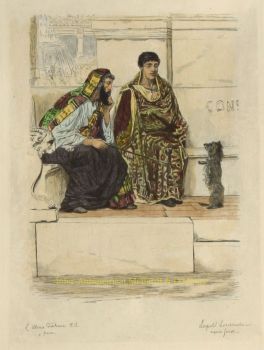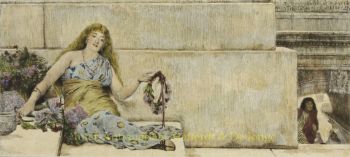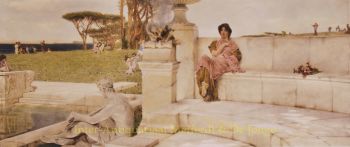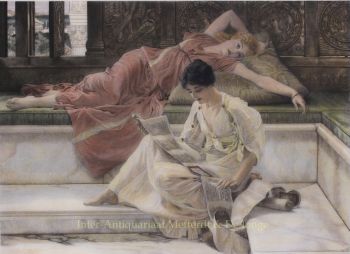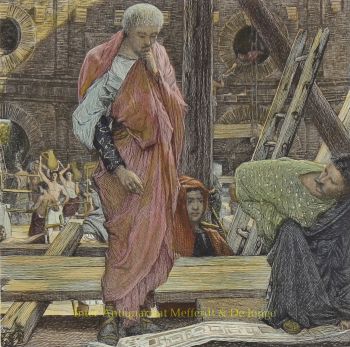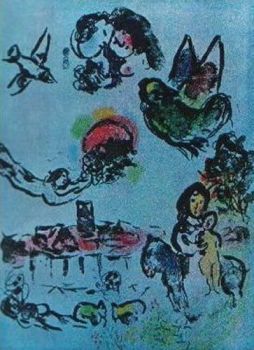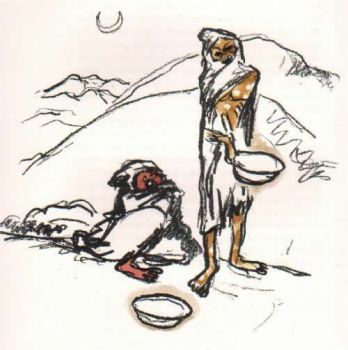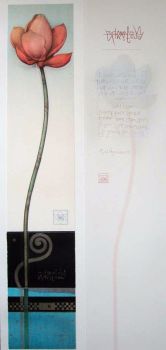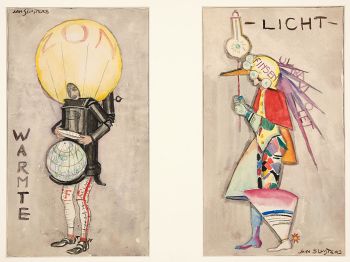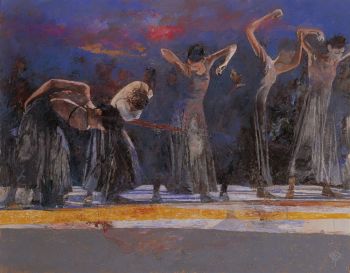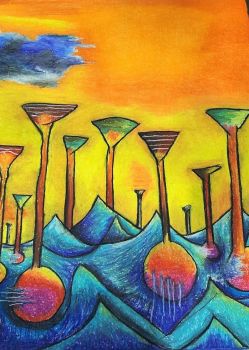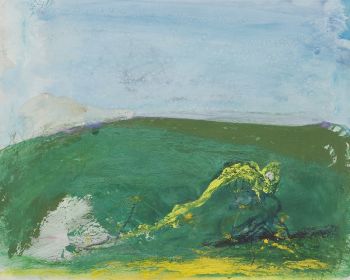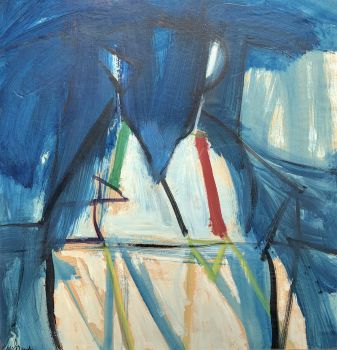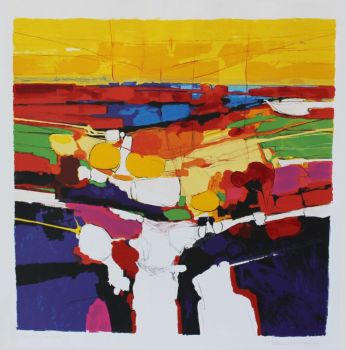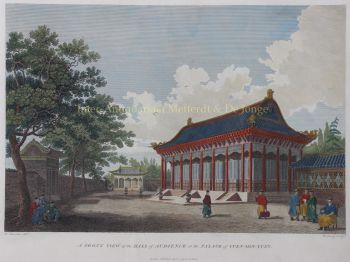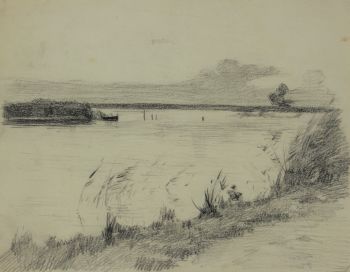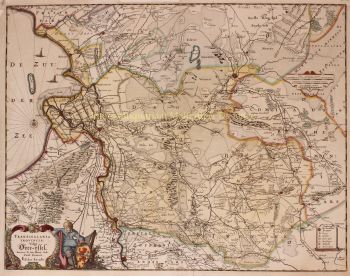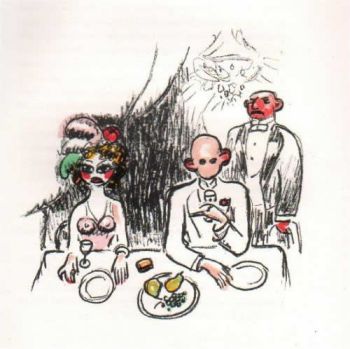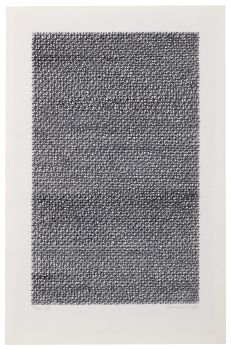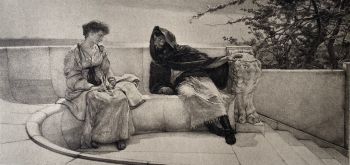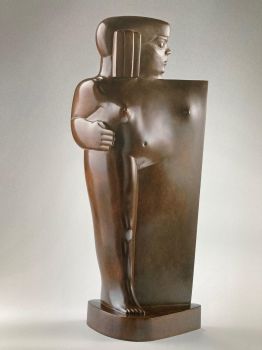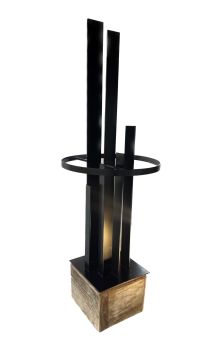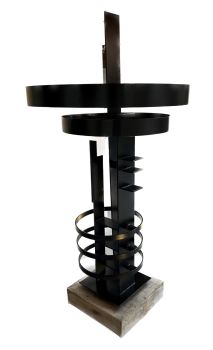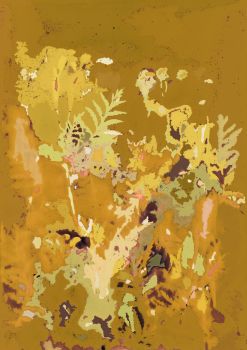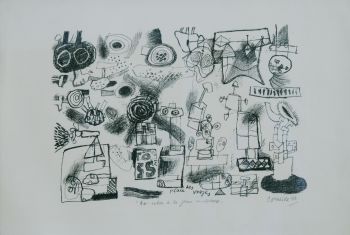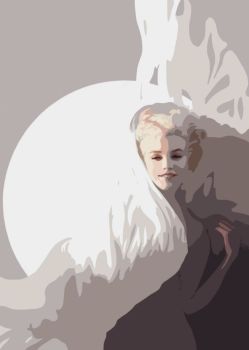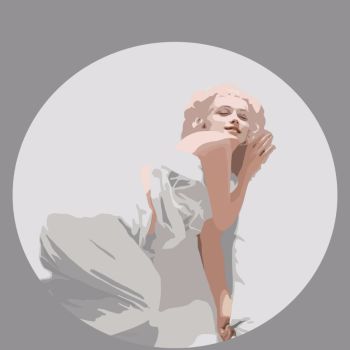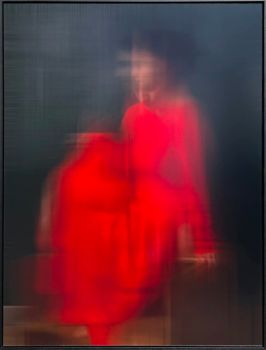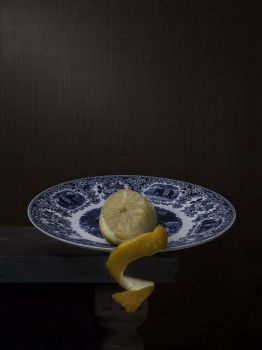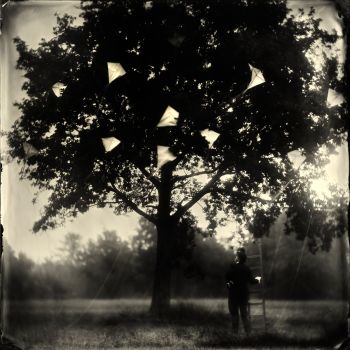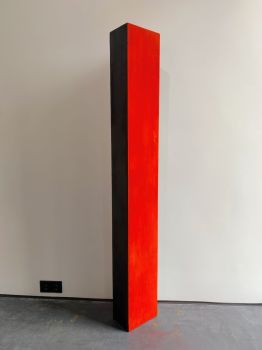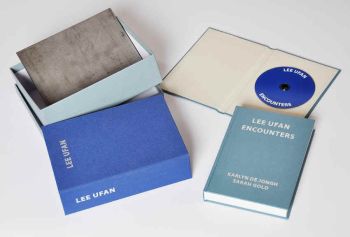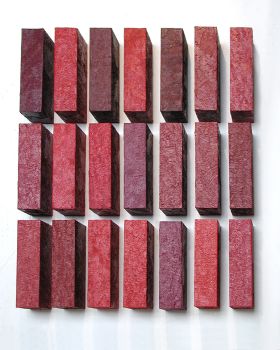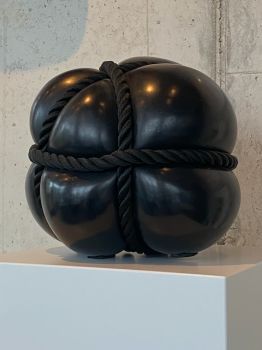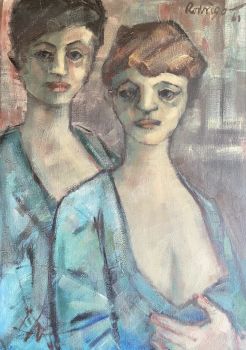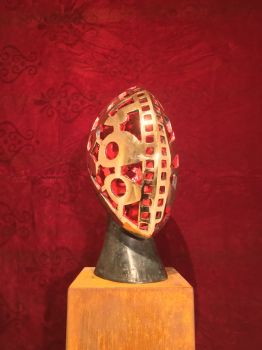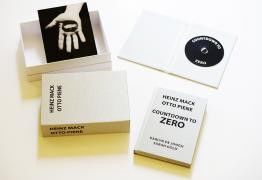Ave Caesar! Io Saturnalia! 1895
Lawrence Alma-Tadema
Fine Art paper printPhotographic print
35 ⨯ 47 cm
ConditionVery good
€ 250
Gallerease Selected
- About the artwork
Originele fotogravure gedrukt op zwaar crèmekleurig papier naar het schilderij 'Ave Caesar! Io Saturnalia!' in 1880. Afmetingen van de afbeelding: 11,5 cm bij 23 cm Papierformaat: 35 cm bij 47 cm Toen de moordenaars van Gaius de menigte buitensloten onder het voorwendsel dat de keizer alleen wenste te zijn, werd Claudius met de rest verdreven en trok hij zich terug in een appartement dat het Hermaeum werd genoemd; en even later, in grote schrik door het nieuws van de moord, sloop hij weg naar een balkon in de buurt en verborg zich tussen de gordijnen die voor de deur hingen. Terwijl hij daar ineenkromp, zag een gewone soldaat, die in het wilde weg rondsloop, zijn voeten en wilde hem vragen wie hij was, trok hem naar buiten en herkende hem; en toen Claudius van schrik aan zijn voeten viel, riep hij hem uit tot keizer. Alma-Tadema's toespelingen op Seutonius' beschrijving zijn onmiskenbaar. De scène speelt zich af in het Hermaeum (Huis van Hermes), zoals blijkt uit de met bloed besmeurde herm, of buste, van Augustus op de achtergrond. Claudius, een bekende lafaard, keizerlijke imbeciel en onwaarschijnlijke kandidaat voor het keizerschap, krimpt ineen van afschuw wanneer de wacht zijn felrode schoenen en ware identiteit herkent. Caligula kan ook worden herkend aan zijn voeten; hij is vrijwel zeker de eigenaar van de felgroene laarzen die uit de stapel lijken steken. Zoals de kunsthistoricus R.J. Barrow heeft opgemerkt, zijn de groene laarzen "een geestige verwijzing naar Caligula's naam, die Ôkleine laarzenÕ betekent, bedacht toen hij als kind het kostuum van soldaat droeg, met militaire laarzen aan". Het hele schilderij is in feite een geestige kritiek op Rome, waarbij het verachtelijke heden wordt afgezet tegen een heroïscher verleden. Ondanks de beroemde onderwerpen heeft Een Romeinse Keizer dus een gemeenschappelijk thema met de meer huiselijke schilderijen van de kunstenaar: het is onheroïsch. Het schilderij verschilt echter van afbeeldingen uit het dagelijkse leven in die zin dat het geen toonbeeld is van grootheid waarmee de Britten zich gemakkelijk zouden kunnen identificeren, of zich zelfs maar mee zouden willen identificeren. De onderwerpen zijn tegelijkertijd vorstelijk en meelijwekkend. Er is een duidelijke discrepantie tussen de keizerlijke status van Claudius en zijn afgetobde fysieke toestand. Een muurschildering van de slag bij Actium, ter viering van Octavianus' overwinning op Marcus Antonius en Cleopatra in 31 VC, is onheilspellend afgesneden. Aan de rechterkant van het doek staat het huisaltaar van de keizerlijke familie, "met de nadruk op het feit dat Caligula werd vermoord voor het altaar van zijn nobelere voorvaderen". Net als zijn literaire inspiratie Suetonius, geeft Alma-Tadema deze gebeurtenis een geamuseerde oneerbiedigheid en ironie mee.
This photogravure is from the portfoliobook: "Laurence Alma Tadema, R.A. - A Sketch Of His Life And Work. With A Portrait, An Autograph, And Twenty-Two Illustrations." (London: Berlin Photographic Company) 1895, containing 22 reproductions of works by Tadema, including: a half title-page; a frontispiece showing the artist in his studio; another title-page with a printer's mark; a list of illustrations; a biography of the artist by F. G. Stephens; with head and tail-pieces; totale edition number of 400. Bound in cloth-covered binding inscribed with the title. - About the artist
Lawrence Alma-Tadema is one of the most highly renowned romantic artists of late 19th century Britain. He was born in the Netherlands as Laurens Tadema, to the family of the town notary. Later, as he tried to make his niche in the art world, he changed the spelling of his first name to the more English “Lawrence,” and included his middle name “Alma” as part of his surname, so he would be listed among the “A’s” in exhibition catalogues.
As a child, it was decided that Alma-Tadema would pursue the career of a lawyer, but he suffered a mental and physical breakdown when he was fifteen years old. He was diagnosed as consumptive, given a short time to live, and thus free to pursue a life of leisure and pleasure. Once left to his own devices, he decided to study art, as his mother had paid for art lessons in his earlier childhood and it was one of his interests. He regained his health and studied at the Royal Academy of Antwerp in 1852, where he won several respected awards. His first major work was exhibited in 1858, and it won much critical praise, and creating a sensation in the art world. By 1862, he set own in his own studio to pursue his individual career in art.
In 1869, Alma-Tadema lost his wife of six years to smallpox. Disconsolate and depressed, he ceased painting and his health was failing. Under the advice of his physician, he traveled to England for a medical diagnosis, where he was invited to the house of a fellow painter, Ford Madox Brown. It was here that he laid eyes on Laura Theresa Epps, who was 17 at the time, and fell madly in love with her. Alma-Tadema took advantage of the outbreak of the Franco-Prussian war to relocate to England, where he wasted no time contacting Laura and contracting her in private art lessons. It was during one of these lessons that Alma-Tadema proposed, and they were married shortly thereafter. Alma-Tadema was 34 years old, and the bride 18.
Alma-Tadema spent the next part of his life traveling through Europe, and enjoying the continued success of his paintings. As a man, his bursts of bad temper were eased by his extroverted, warm personality and sense of mischief. A perfectionist and obsessive worker, he also innovated a new numbering technique, which made it difficult for forgers to pass off unoriginal works. In his later years, although his artistic output decreased somewhat, he enjoyed continued success, eventually becoming one of the wealthiest painters of the 19th century. He was knighted in England in 1899.
In 1912, Alma-Tadema traveled to Germany to undergo treatment for stomach ulcer, and died in Germany at the age of 76. After his death, his work was mostly ignored. Due to the drastic changes taking place in art, Alma-Tadema’s artistic genius would not come into the public eye again until the 1960s. His meticulous work had since been used as source material for dozens of Hollywood movies.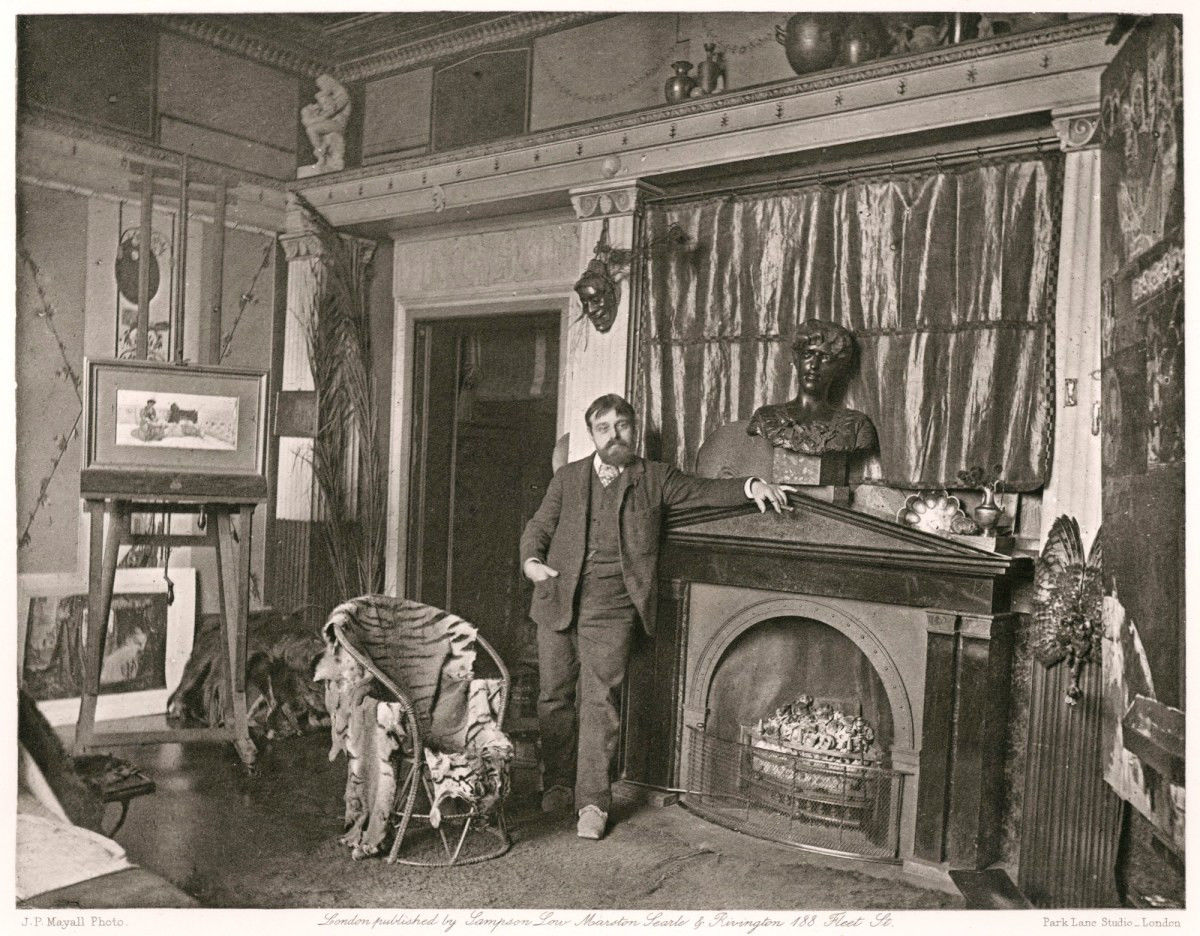
Are you interested in buying this artwork?
Artwork details
Related artworks
- 1 - 4 / 12
Lawrence Alma-Tadema
"Caracalla and Geta: Bear Fight in The Coliseum, AD 203" 1907
Price on requestGallerease Selected
 Curated by
Curated byDanny Bree
1 - 4 / 24- 1 - 4 / 24
Lawrence Alma-Tadema
"Caracalla and Geta: Bear Fight in The Coliseum, AD 203" 1907
Price on requestGallerease Selected
 Curated by
Curated byDanny Bree
1 - 4 / 24Lawrence Alma-Tadema
"Caracalla and Geta: Bear Fight in The Coliseum, AD 203" 1907
Price on requestGallerease Selected
 Curated by
Curated byDanny Bree
1 - 4 / 24Peter Paul Rubens (circle of)
Portrait of a man dressed up as an oriental man1620 - 1630
Price on requestGallerease Selected
Yoko Ono
YOKO ONO: "ARISING" SIGNED BOOK PLUS SMALL ARTWORK 2010 - 2014
Price on requestGallerease Selected
1 - 4 / 12








